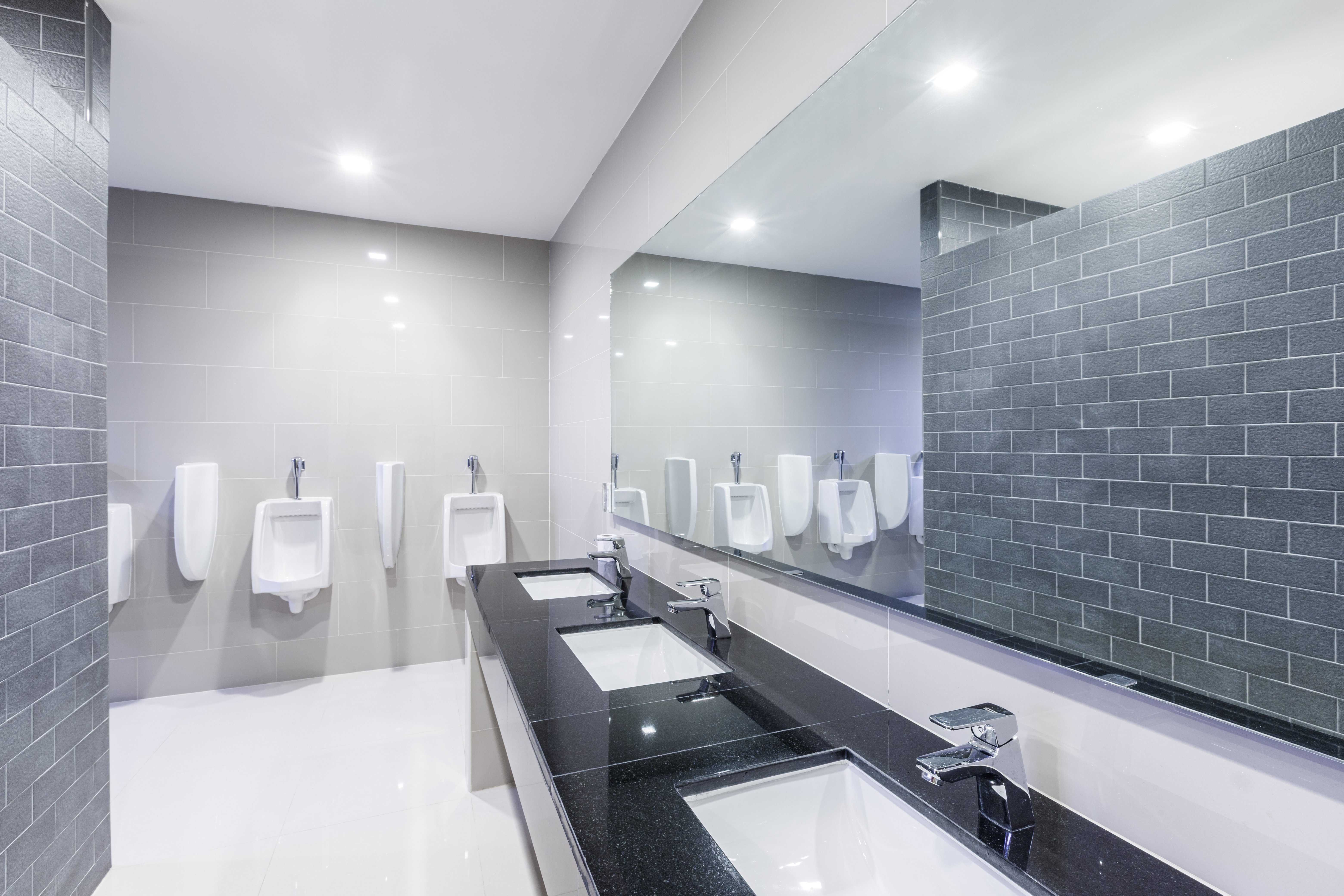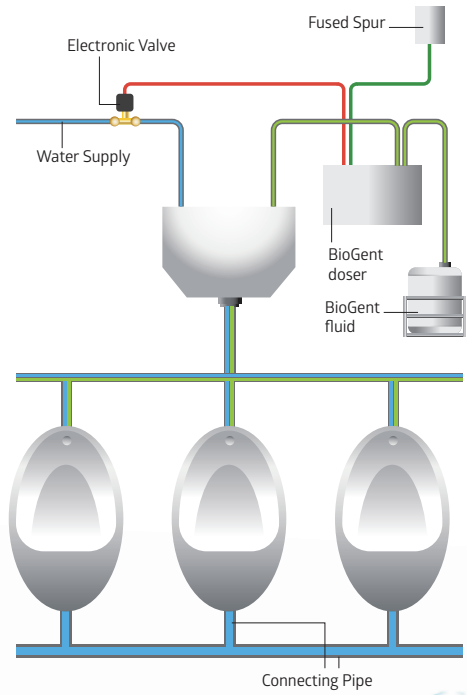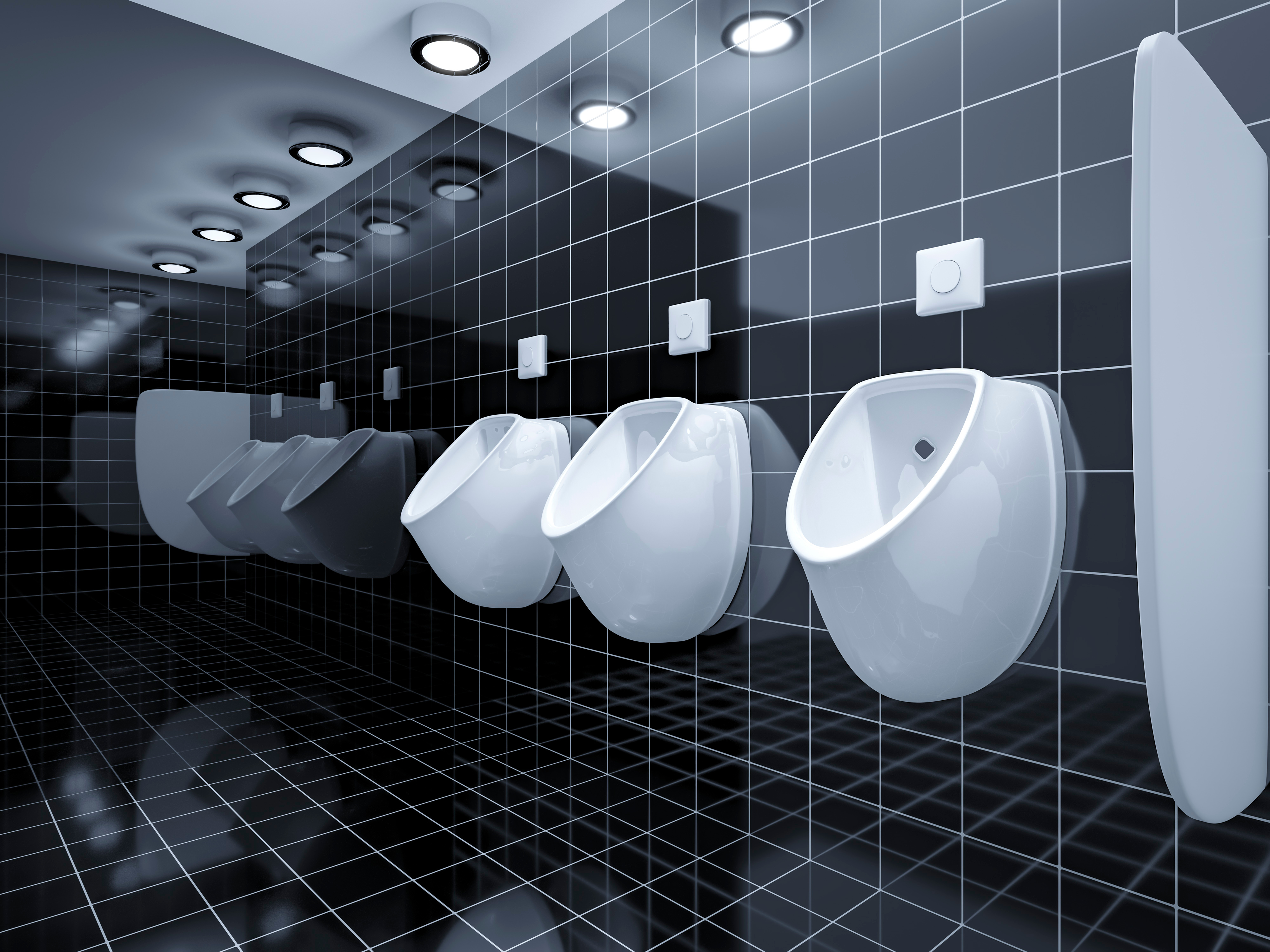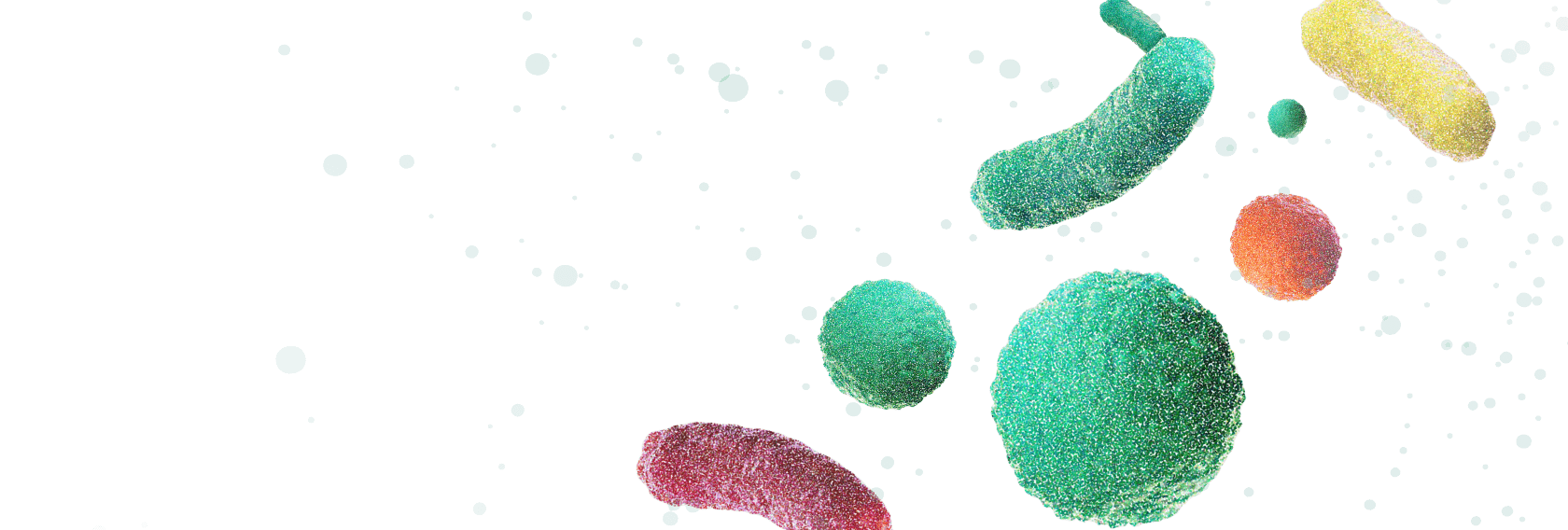- Home
- Products & Services
- By Brand
- BioGent
Uncontrolled urinals can flush every 3 minutes, resulting in up to 2000 cubic metres of water used per year, costing up to £10k. As well as being costly, this is in breach of ‘The Water Regulations 1999’ which specify a maximum water usage of 7.5 litres per urinal bowl or 700mm of slab per hour.
Flush controllers and waterless urinals can reduce water usage by up to 90%. The resulting build up of uric scale and conversion of urea to ammonia, however, can cause significant odour problems and blockages.

What causes odours in washrooms?
Urine consists of a combination of 5% urea, uric acid and salts. These crystalise to form uric scale if:
- There is an energy transfer (heating or cooling)
- The pH level is above neutral
Uric scale is extremely hard to remove and can combine with limescale to form an ideal breeding ground for urease-producing bacteria. These bacteria convert the urea into ammonia, further elevating the pH, increasing scale build-up and creating foul smelling odours.
Urine is a perfect food source for these undesirable bacteria, creating a cycle that increases maintenance costs and customer/staff complaints.
How does BioGent work?
BioGent provides water savings while ensuring washrooms remain odour and blockage free. It works to remove undesirable bacteria and reduce the formation of uric/limescale:
- Stops minerals in the water combining to produce scale
- Naturally lowers the water to pH 4 to reduce scale
- Sanitises the bowl and pipework to remove undesirable bacteria
- The system is controlled by a digital timer allowing a flush interval of up to 45 minutes, with a hygiene flush facility for out-of-hours.
- The product is dosed into the header tank with each flush, ensuring all water is treated at the correct rate.
- Part of the success of the system is a quarterly service interval by a trained engineer

Typical savings
A switch to BioGent can result in the following savings:



.png?width=200&height=130&name=Waters%20Per%20Hr%20(1).png)


.png?width=200&height=130&name=Waters%20Per%20Year%20(1).png)


